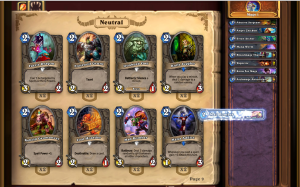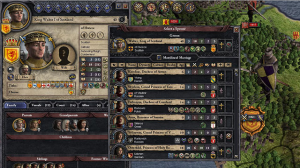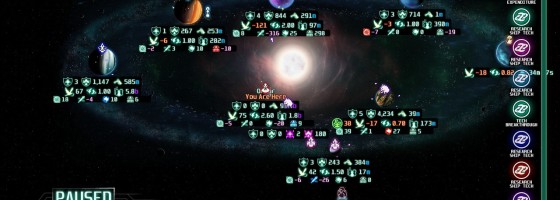Playing through Arcen Game’s latest strategy title: The Last Federation, I was having trouble understanding it. And part of the problem was that I was left unsure as to what I should be doing and how were my choices impacting the game. This brings up the importance of making informed decisions with gameplay and why complexity is not always your friend.
Making Every Move Matter:
Playing a strategy game is all about choice and their impact on both the player’s plan and the enemies. Low level strategy play is pretty much the player is clicking buttons and making actions without any regard to a greater strategy. They should hopefully reach a point of a mastery where they can start playing and thinking multiple moves in advance.
So that they know by doing X that it will set Y in motion that will help move plan Z forward. Opposed to just playing the game one turn at a time and hoping for the best. Growing to understand that point of mastery is all about making informed decisions: Where the player has a complete understanding of what their actions will impact.
Informed decisions can be seen in any genre that requires some level of decision making: From platformers when you need to decide where and how far you can jump to, action games for what attacks to use and etc. The important element is that the player needs to understand both what’s happening on screen and what are their available options.
The challenge of making informed decisions is that there is a line between giving too little and too much information that can confuse the player in different ways.
Information Under and Overload:
One of the long standing challenges of game design is figuring out just how much information to give the player at one time. Many early games were about filling the screen with charts, numbers, and buttons and so on to make sure that the player had everything they needed. However this just left a lot of people staring blankly at information that they had no idea how to connect the dots.

Even action heavy games have informed decision making as the player needs to figure out the correct path through the level.
While other games gave a basic UI and hid all the information behind other screens or simply didn’t tell the player. The player has no idea the consequences of their actions and couldn’t learn the game as there was no relation to what they’re doing and how it was impacting the game.
Our two big examples of these situations couldn’t be further from each other in design and implementation: Hearthstone and The Last Federation.
The Last Federation suffers from a huge learning curve due to information overload. Arcen was smart to hide mechanics and systems that unlocked overtime, however this just created a delayed information overload. The Last Federation runs on a complex simulation model that governs how all the planets grow, die and make their choices. This means there are a lot of numbers that the player will look at– Planetary readings, research options, economy, size of armies, resource outputs and a lot more.
Similar to a game like Crusader Kings 2, the player isn’t making immediate decisions that have instant results. Instead, they put a plan into action and then let the simulation run and see what their choices actually did. But when you’re trying to learn a game, delayed results aren’t helpful as you won’t know if what you did impacted the game or if something else did.
While tooltips are aplenty, they only give you a basic idea of what the action or number means. Since you are working towards a long term goal it’s easy to know where you start and where you want to end up, but how to get from beginning to end is the hard part.
Hearthstone has the opposite problem. The game features a great tutorial to understand the basics of play, information is easy to find on what cards do and everything has a great and clean aesthetic to it. However Hearthstone’s lack of advanced information gives an unfair disadvantage to new players or those who learn strictly in game.
Talking to a few expert Hearthstone player friends of mine, they taught me concepts about mana curve, building a deck of good cards and more importantly how to tell what’s a good card or not. This information is something that anyone who masters Hearthstone would know, but none of it is mentioned or alluded to through the game.

Understanding the meta game of picking out quality cards is vitally important and something that Blizzard doesn’t teach you.
The problem is that the designers were trying to leave some mystique to playing Hearthstone to make it seem more complex than it actually is.
The truth of the matter is that Hearthstone is a simple game with basic rules that define deck strategies and play.
There are plenty of cards in the game that all around just plain suck compared to comparative cost cards and someone new won’t understand the decision making as to why that is. There just aren’t enough cards and advanced mechanics in the game at the moment to create a variety of strategies or break from the conventional tactics.
This is a case where there isn’t enough information in game for someone to take that step from beginner to average to expert. Just playing through the game on your own, you’ll understand the basics but it will be very hard for you to take that next step.
Because a CCG has as much random luck as it is about skill, a new player won’t understand if they have a good or bad deck. One game you may draw every card you need when you need it; the other time you won’t get anything good. Now how could someone new connect the dots to see if there is a problem with their deck? The answer is they can’t, at least without outside help.
Degrees of Confusion:
Figuring how much information to convey to the player when designing is very hard for one big reason: You know how everything works.
When you’re the person who put together all the mechanics and systems piece by piece, of course you know how everything works and can’t understand why someone would be confused. This is where the importance of play-testing comes in, to make sure that what you find simple to understand is similar to your audience.
If you’re trying to decide how much to tell the player as in Hearthstone’s case, if there are major rules or design philosophies that come into play with how expert players are understanding the game, then you have to fill new players in on it. For example, how someone understands the Meta game of what is a good card. However in games where there are exploits that break the game, that’s a different story.

Crusader Kings 2 is one of many strategy titles that don’t do a good enough job explaining how things work.
The reason is that exploits are elements that can be corrected or if you’re playing a single player game, something that won’t affect everyone.
But if you’re trying to learn a competitive or complex game and there are major rules, then you need to explain that to someone new or they won’t figure out how to continue learning your game.
I’ve talked about this plenty of times — If someone needs to go outside of your game or manual to learn how to play, then you have failed with properly explaining your game mechanics.
Being able to make informed decisions is one of the hardest things to learn as a player and to show as a designer. They require a combination of good tutorial and UI design and is something that a lot of developers ignore. We see this with grand strategy or niche titles who already have their pre-established fan base and don’t want to (or can’t) better explain their systems. A great game is easy to learn and difficult to master, not the other way around.

